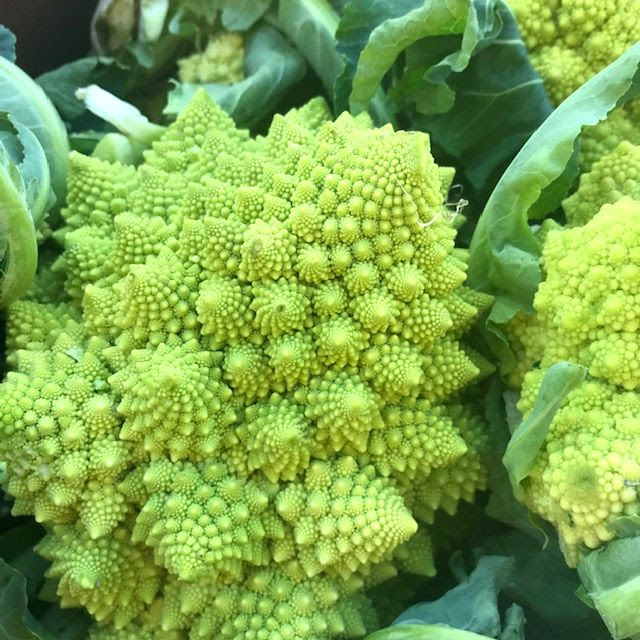These members of the brassica family are some of the most beautiful, colorful and unusual products of the season. But do you ever wonder how traditionally white cauliflower becomes orange or purple? Or just what romanesco is exactly? We did! Here’s a quick synopsis of these seasonal beauties.
- cauliflower2
Purple and Orange Cauliflower
Purple Cauliflower
While one may think this is a dyed produce, it’s not! Purple cauliflower gets its hue from the antioxidant anthocyanin, also found in red wine. Purple cauliflower tends to be sweeter, nuttier and less bitter than white cauliflower. Steamed, simmered or roasted, it retains its lavender beauty, especially with a little lemon or vinegar splashed on before cooking (though some purple varieties can turn green if overcooked).
Orange Cauliflower
Orange cauliflower was first discovered in Canada in 1970, although it took years of crossbreeding for the variety to become widely available. The color comes from a genetic mutation that allows the plant to hold more beta carotene. It also contains about 25% more vitamin A than white cauliflower. Its color can range from creamy coral to sunburst orange and it is sometimes referred to as “cheddar” cauliflower.
- cauliflower3
Romanesco
While Romanesco is most likely the least familiar of the bunch, it’s definitely the most interesting! Romanesco is an edible bud that is also commonly referred to as Romanesco Cauliflower or Romanesco Broccoli. What makes it so interesting is it’s unmistakable texture and intricate, mathematical pattern (it’s a fractal!). With a flavor similar to broccoli (but perhaps a little earthier) it’s super crunchy and textural. Romanesco is great for anything from crudites to simply steaming, roasting, or sautéing. The trick to keeping it’s vibrant color is to blanch the florets and then shock them in an ice bath. After that you can add it to just about anything!


